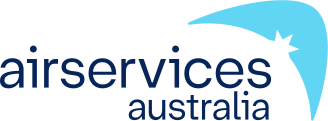Gold Coast curfew and noise abatement procedures
Airport curfew
An airport curfew is a legislated restriction on aircraft operations at a federally-leased airport during a specified time period.
Gold Coast Airport is operational 24 hours a day, however, there is a curfew in place which restricts operations in and out of Gold Coast Airport during the hours of 11pm to 6am. During daylight saving time the airport curfew operates on Queensland time so New South Wales residents will see aircraft movements until 12 am instead of 11 pm.
While most aircraft operations are prohibited during this period, emergency aircraft, some small jets, propeller-driven aircraft and freight movements are allowed. The curfew limits what aircraft can land and take-off and, in some cases, the runways that can be used.
Curfew movements at Gold Coast Airport are small in number – on average less than one per night.
Curfews are legally enforceable and regulated by the Department of Infrastructure, Transport, Regional Development and Communications, who can make a determination of a curfew violation and prosecute an airline or aircraft operator for breaching a curfew.
Noise Abatement Procedures
Every major airport has Noise Abatement Procedures (NAPs), which are procedures designed to reduce the impact of aircraft noise on the community. There are some limitations to the use of NAPs and they may not be used if they generate delay and congestion, as this can cause noise and emission impacts. Air traffic control or pilots may not be able to use them in certain situations, for example weather conditions or operational requirements.
NAPs at Gold Coast Airport include:
- runway 14 is the preferred runway for all arriving and departing flights
- arriving aircraft fly over water for as long as possible before taking their final approach course
- circuit training is not permitted between 10 pm and 6 am and, where possible, circuits are distributed equally left and right of the runway in use.
Gold Coast Airport also has specific NAPs for the use of the Instrument Landing System (ILS). Read more about these on our The Instrument Landing System page.
A ‘preferred runway’ does not mean that one area (north or south) will get all the traffic, because each area will get either departures or arrivals, not both. In addition, preferred runways can only be used when weather, safety and operational efficiency allow.
Runway 14 (arrivals from the north, departures to the south) is the preferred runway because generally arriving aircraft are slightly quieter than departing aircraft at a close distance to an airport (for example, at Tugun). As the distance from the airport increases (for example, Banora Point and Tweed Heads), departures tend to be quieter than arrivals because they are at a higher altitude. However this is dependent on aircraft type. Individual people will experience aircraft noise in different ways.
Fly Neighbourly Agreements
Fly Neighbourly Advice or Fly Neighbourly Agreements are voluntary agreements established between aircraft operators and communities or authorities (normally airports or local councils) to assist in reducing the impact of aircraft noise on local communities. Gold Coast Airport has a voluntary Fly Neighbourly Program which encourages pilots to fly in a noise sensitive way whenever possible.


